Super-simple solutions for common household headaches.
27 Instant Fixes For Nagging Problems Around the House
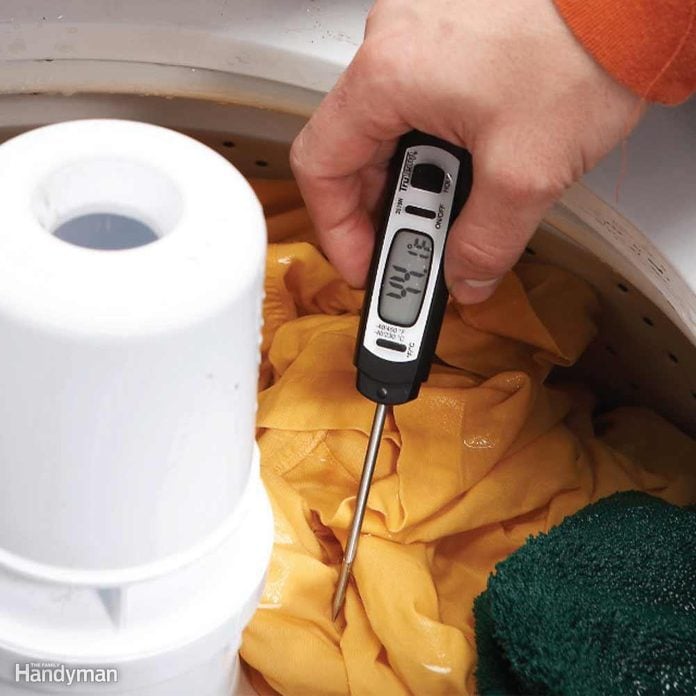
Cleaner Clothes
Water coming from the cold water tap can be pretty chilly during the winter (or year-round if you have a well). According to washing machine manufacturers, if the water is colder than 65 degrees F, the additives in laundry detergent won’t work as well—and powder detergents won’t fully dissolve. Cold water for washing should be in the 65- to 85-degree range or clothes won’t get completely clean.
To find out if your clothes are getting a good wash, check the water temperature with a cooking thermometer (one that registers low temperatures) when you do a cold, a warm and a hot wash. If the water temperature is below 65 degrees for cold water washes, boost it by selecting warm water for part of the initial fill cycle. If the warm water wash is below 85 degrees (a common problem during winter or when the washing machine is at the opposite end of the house from the water heater), try the hot water setting instead for all or part of the wash cycle. Or run the hot water tap into the laundry tub until it gets hot, then turn on the washer.
Always leave rinse settings on cold, no matter what washing temperature you choose. Cold water rinses are just as effective as warm water rinses, and you’ll save a lot of energy.
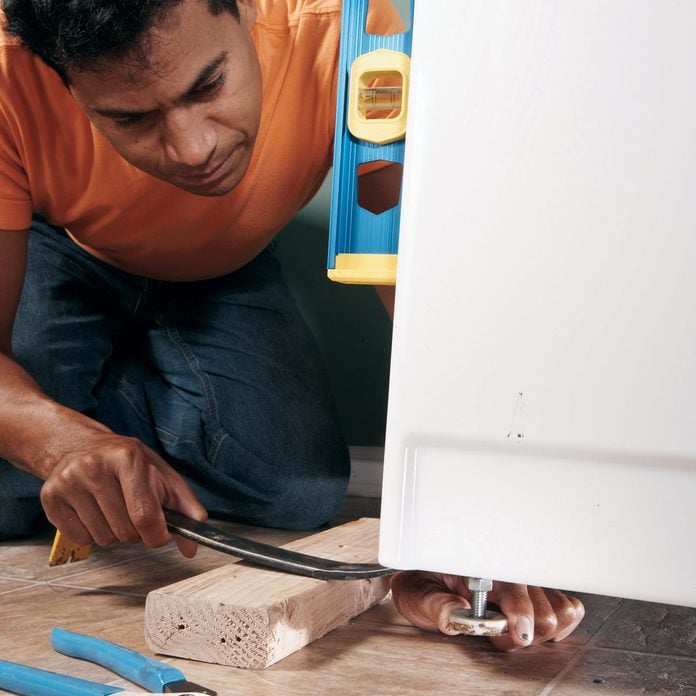
Stop Washing Machine Walk
If your washing machine has been making loud thumping noises and moving across the floor when it’s in spin cycle, it probably needs to be leveled. Fortunately, it’s an easy fix, though you may need a helper to tilt up the machine. Push the machine back into position if it has moved across the floor. Adjust the front legs to make the machine level across the front and from front to back.
The legs can usually be turned by hand after the locking nut at the top of the threads is turned down, but if the threads are rusted, use a wrench. After leveling, lock the leg into place with the locking nut.
Most washing machines have self-adjusting rear legs that level from side to side, but dirt, lint and rust may keep them from working properly. If the back isn’t level, tip the washing machine up a few inches and then set it back down so the weight of the machine loosens the legs. If the machine still doesn’t level out, the self-leveling support may be rusted against the washing machine frame. Tip the machine off the ground, then break the self-leveling support loose by tapping the legs.
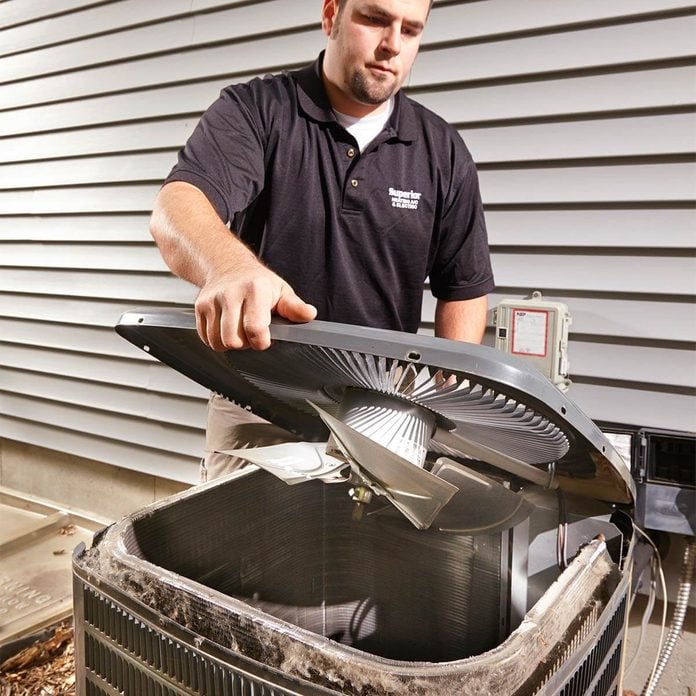
If the A/C Isn’t Working
If you turn your central air conditioner on, off and then on again in rapid order, chances are you’ll blow a fuse or shut off a circuit breaker, or the air conditioner simply won’t respond. That’s because the compressor (in the outdoor condensing unit) may have stopped in a high compression mode, making it difficult to start until the compression releases. Older condensing units may switch the compressor on anyway, which causes the circuit to overload and blow a fuse. Newer, ‘smarter’ condensing units will prevent this blunder by delaying the A/C’s ‘on’ function for a few minutes. It’s easy to mistake this delay for a faulty air conditioner. Be patient and give the air conditioner about five minutes to come back on.
To determine if you have a blown fuse, locate the special fuse block near the outside unit. Pull out the block and take the whole thing to the hardware store. A salesperson can test the cartridge fuses and tell you if you need to replace them. Another simple reason your A/C might not come on: You’ve signed up for a cost discount with your electric company in exchange for limited air conditioning during high-demand periods, and you’re in an ‘off’ period. If you can’t remember, call your electric company to find out. You don’t want to pay the repair technician to drive out and explain this program to you.
PRO TIP:
Another common air conditioner problem is a clogged furnace (blower) filter.
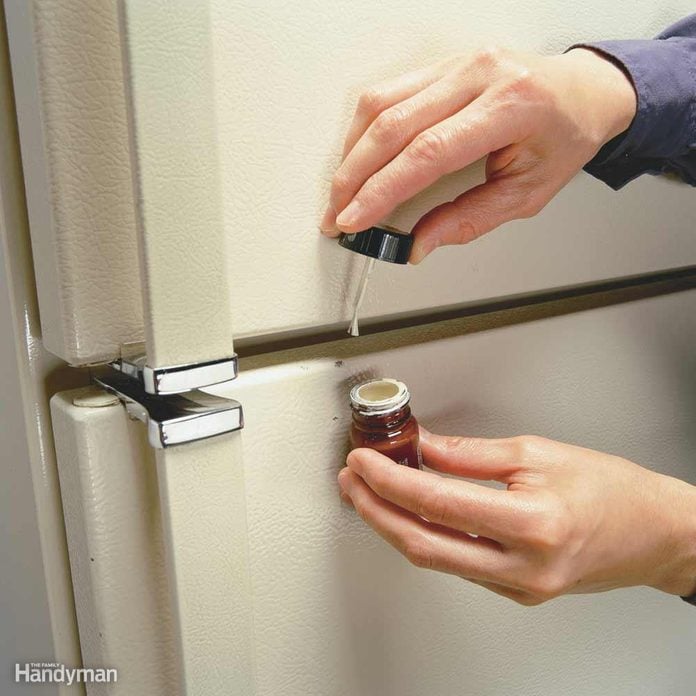
Appliance Touch-Up Paint
A single scratch or chip can make a beautiful new appliance look like something you found out in the alley. Fortunately, you can make those eyesores, even up to 1/4-in. diameter, almost completely vanish with color-matched epoxy touch-up paint. The trick? Fill the chip with multiple thin coats instead of trying to cover it all at once. Use the porcelain-type version for stovetops and sinks. You can also paint the plastic handles on your appliances to make them look brand new.
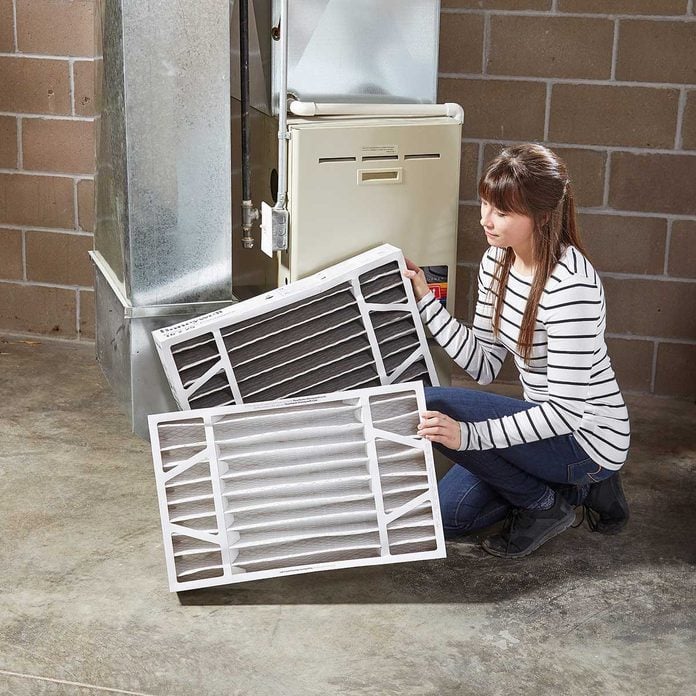
Before You Call About Your Heat or A/C
Furnace quit? “We always ask, is the furnace switch turned on? You’d be surprised how many times someone in the house accidentally switches the furnace off,” says furnace repairman Bob Schmahl.
If you live in an area with snow and have a furnace that vents out through the side wall, make sure the vent pipes aren’t plugged with frost or snow. Plugged vents cause the furnace to shut off automatically. Once you’ve unplugged the vents, reset the furnace by switching off the power: Either turn off the switch located on or near the furnace, or flip the circuit breaker that controls the furnace. Wait a minute, then switch the power back on.
Not getting enough heat? Check the furnace filter. Schmahl says, “When I ask people when’s the last time you changed the furnace filter and they give me that deer-in-the-headlights stare, I know what the problem is.”
One of the most common causes of insufficient heat or cooled air is a plugged furnace filter. Change inexpensive woven fiberglass filters once a month or buy a better-quality pleated filter and change it every three months to avoid heating and cooling problems. Another common cause of cold rooms during heating season is a blocked cold air return. Be sure your couch or an area rug isn’t covering a cold air return vent because this can slow the entry of heated air into the room.
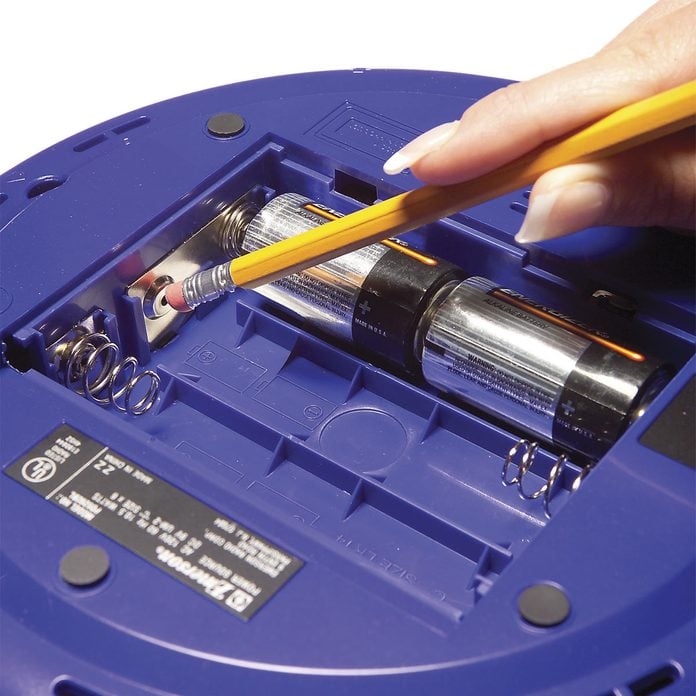
Clean Battery Contact Points
If new batteries don’t revive your radio, flashlight or other battery-powered gizmo, don’t toss it into the trash just yet. Corrosion on the battery contact points could be stopping the power flow. Rub the points with a pencil eraser. If the points are caked with heavy corrosion, you may need something more abrasive, such as an emery board or fine sandpaper.
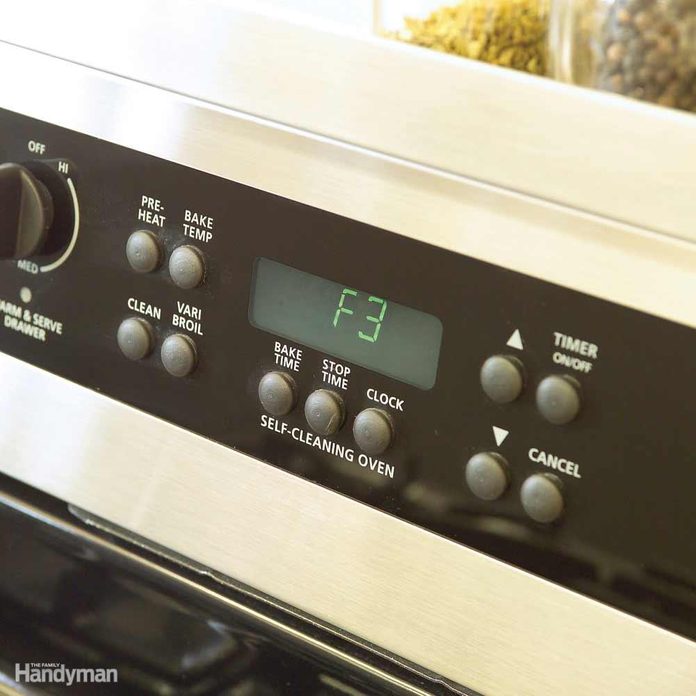
Diagnose Appliance Problems With Fault Codes
Do you have an appliance flashing some weird cryptic message on its digital display? Is your oven saying F3, or your dishwasher announcing C5? These short repeating messages are actually fault codes—your appliance telling you what’s wrong with it—and they’re found on many newer appliances. For instance, F3 on a Maytag oven display means the oven temperature sensor needs to be replaced. A GE dishwasher that says C5 has low water pressure and probably needs a new water inlet valve.
When you see a code number flashing, look it up in the owner’s manual or at the manufacturer’s Web site, or check the online appliance repair sites. Armed with a diagnosis and a make and model number, you can purchase the right part from a supplier and make the fix yourself. Or at least save some time on the service call by letting the repair service know what they’ll need to bring along to make the fix.
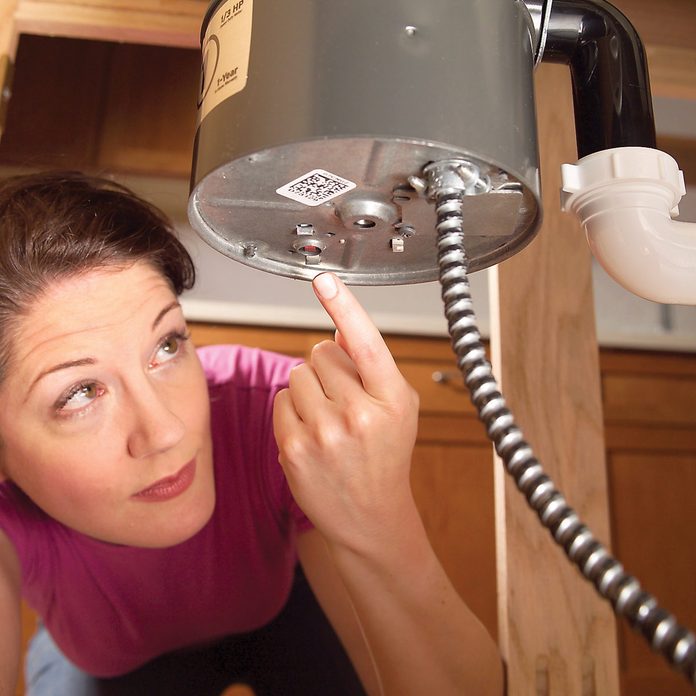
If Your Disposer Won’t Start, Push the Reset Button
All disposers have an overload feature that automatically shuts off the power when the motor becomes overloaded and gets too hot. Once the motor cools, simply push the reset button on the side of or under the unit.
On the other hand, if it hums but doesn’t spin, it may have something stuck in it. Switch the disposer off, then try working through it by turning the blades with a special disposer wrench (sold at home centers) or by turning a bottom bolt. Many disposers have an Allen wrench for that purpose, inset on the bottom of the machine.
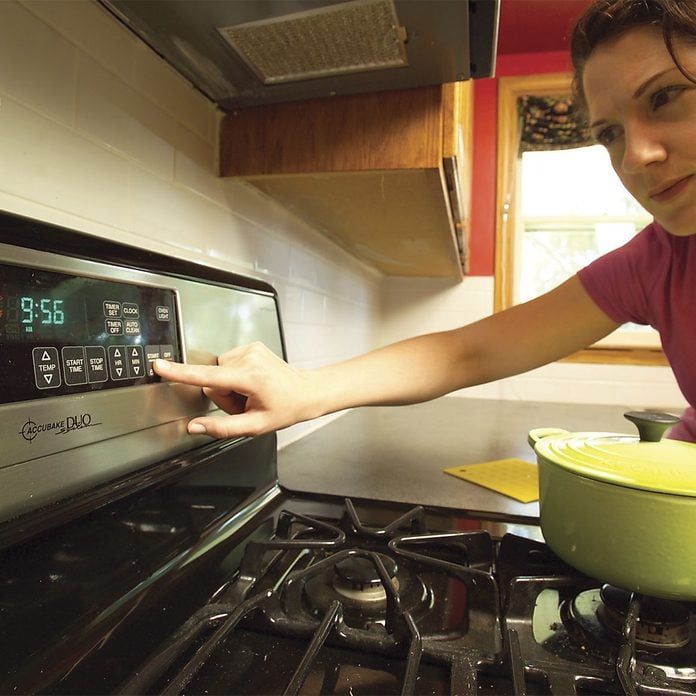
Oven Won’t Heat? Check the Clock
Blame it on the technology. It so happens that if you set the ‘time cook’ function, the oven, much like a programmed VCR, won’t turn on until the appointed time. You may have done this inadvertently, but if your digital display reads ‘hold,’ ‘delay’ or ‘time cook,’ then the timer is engaged. You’ll have to clear it first by pushing the ‘off’ button. On ovens with dials, be sure the knob is turned to ‘manual.’
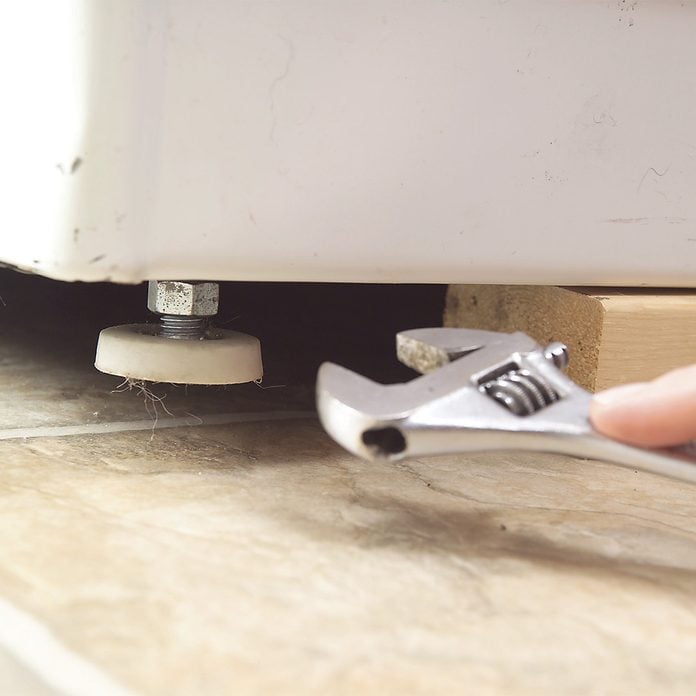
Quiet a Noisy Washer by Leveling It
When a washing machine cabinet rocks, it makes a horrible racket during the spin cycle. The solution is to simply readjust the legs. Screw the front legs up or down until the cabinet is level. When both legs are solid on the floor, tighten each leg’s locking nut. In most washers, to adjust the rear legs, gently tilt the machine forward and gently lower it down. The movement will self-adjust the rear legs.
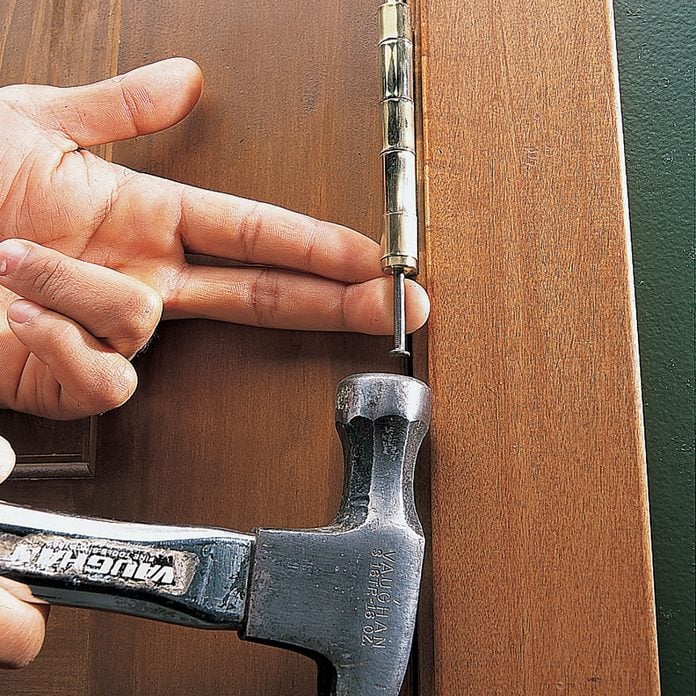
Silence a Squealing Hinge
If you have a door hinge that squeals, we have the fix for you. A little petroleum jelly will rid the hinge of that annoying wail. The petroleum jelly works its way into the hinge and adheres well, so it won’t run off and make a mess like oil or other lubricants.
First loosen each hinge pin by tapping an 8d nail up from underneath. Once the pin is loose, pull it out (lift up on the door handle to relieve pressure if the pin binds). Keep the door closed and work on only one hinge at a time. Then lightly coat the hinge pin with petroleum jelly and dab a little in the top of the pin slot. Reinsert the pin and wipe off any excess. After all the hinges have been lubricated, open and close the door a few times to work the petroleum jelly into the hinge joints.
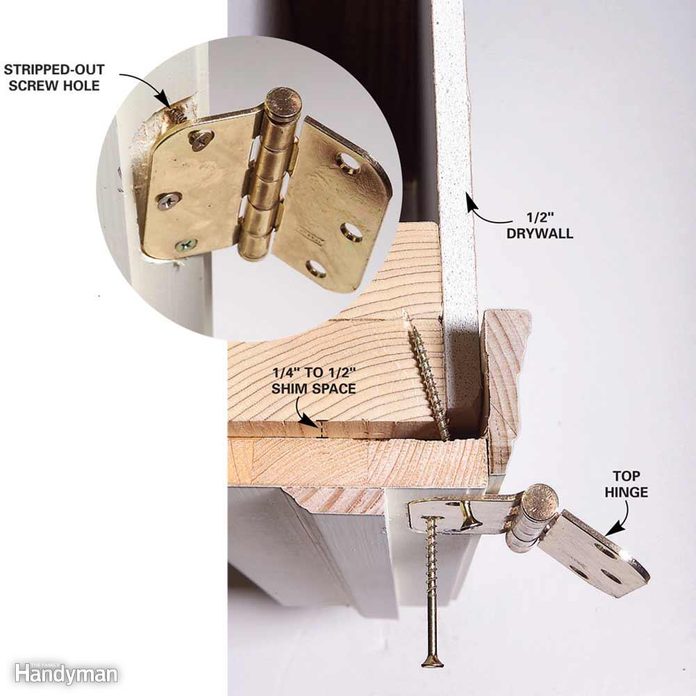
Solid Solution for Stripped Hinge Screws
One day the door closes smoothly; the next day it’s sticking. And the sticking grows worse as the weeks pass. It’s a common old-house problem, but it can happen anywhere kids hang from doorknobs.
The screws holding the top hinges carry most of the weight of the door and are almost always the first to pull out, especially after they’ve been repeatedly tightened over the years (inset photo). The best way to beef them up is to replace the standard 3/4-in. hinge screws with at least two 3-in. screws that go through the jambs and solidly anchor into the framing. If the door has a large hinge with four screw holes, just drive 3-in. screws straight through the two holes toward the center of the door. However, if the hinge has only three holes, add a 3-in. screw through the middle hole and redrill the top screw hole at a slight angle so the screw hits solid wood (photo right).
Start the drill bit at a sharp angle so the bit doesn’t follow the old screw hole. As soon as you feel a fresh hole starting, tip the drill bit back to an angle that will hit the stud—the angle shown here should work for most doors. If the bit or screw feels like it’s sliding off to the side between the drywall and wood, redrill at a sharper angle.
Screw the hinge back in with yellow dichromate (zinc-plated) screws—the color and head size of these rust-resistant drywall screws are a good match for standard brass hinge screws. If the door doesn’t shut properly after all the screws are driven in, they may have been driven in too far, pulling the door frame out of plumb. Just back the screws out a few turns.
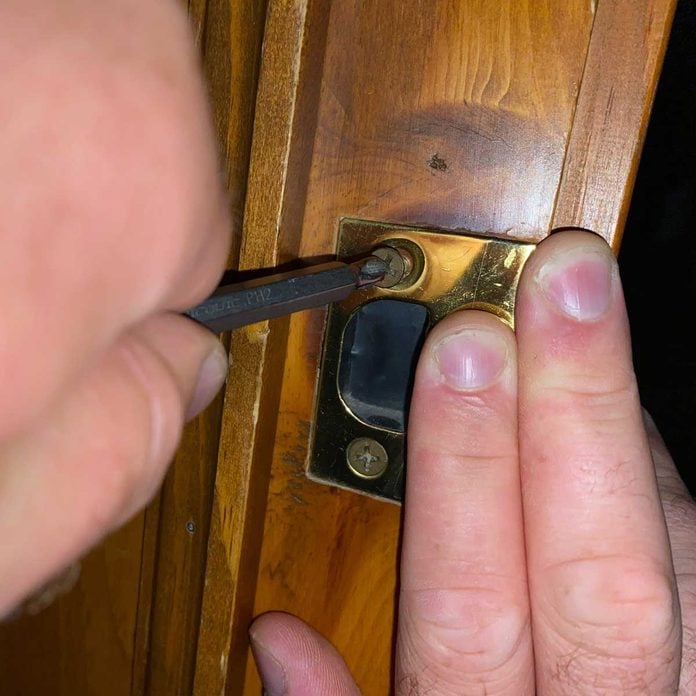
Bend Strike Plate Tab
A closed door that rattles as you walk down the hall is easy to fix. Remove the strike plate and bend the tab forward slightly. You may need two pairs of pliers or even a vise to bend a heavy-gauge tab. Screw the strike plate back into place, check for rattles and try again if necessary. When you get it right, the bent tab holds the door tightly against the doorstop molding and eliminates the rattle.
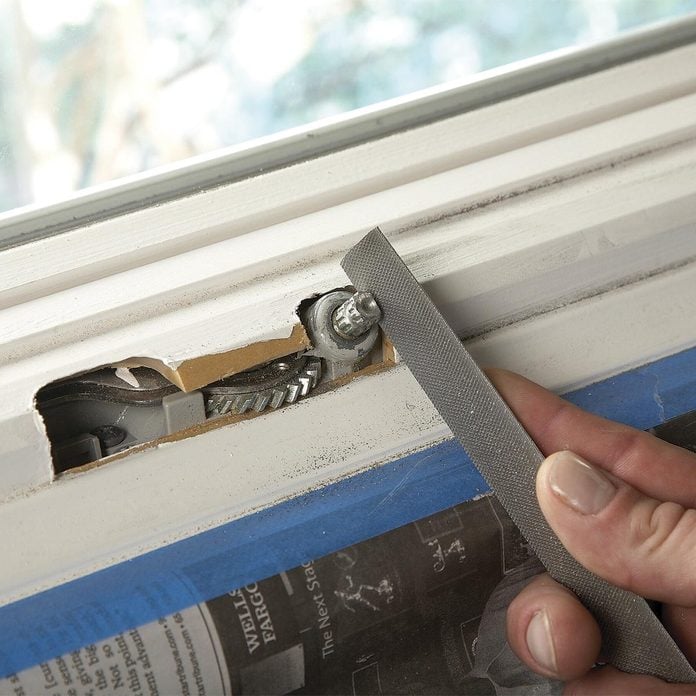
Fix a Stripped Crank Handle
If you turn your window handle and nothing happens, the gears on your handle, crank operator shaft or both are probably stripped. Take off the handle and look for signs of wear. If the teeth are worn, replace the handle (search online for ‘window handles’ or contact the window manufacturer). If the shaft is worn, you can replace the whole operator. But here’s a home remedy to try first.
Start by backing out the setscrew to remove the handle (some newer handles don’t have setscrews and simply pull off—and this fix won’t work). If you have a folding handle, mark where the setscrew is on the operator shaft when the window is closed and the handle is folded up. Remove the handle and file the shaft so the setscrew can lock onto the shaft. The metal is tough; it’ll take about 15 minutes to get a flat side. Or use a rotary tool with a grinder bit to speed up the job. Vacuum the shavings out of the operator so they won’t harm the moving parts.
Reattach the handle with a longer setscrew. If you open and close the window a lot, this fix may not hold up in the long run.
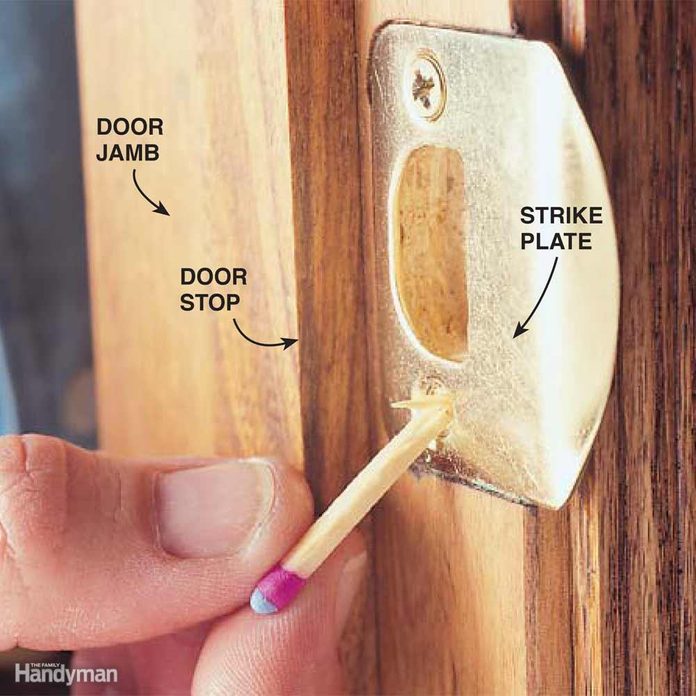
Quick Fix for Loose Screws
You go to tighten a screw in a door latch or hinge and it doesn’t grab and draw tight. It spins. Or worse, wobbles in the screw hole. First try using a larger or longer screw. If the screw still doesn’t get a grip, or if the screwhead size is too large for either the hinge or the strike plate, try the solution my grandfather taught me.
Fill the hole with steel wool, a short length of plumbing solder, or a wooden match (noncombustible end first; see photo). Then reinstall the screw. Don’t use glue—the screw may never come out again.
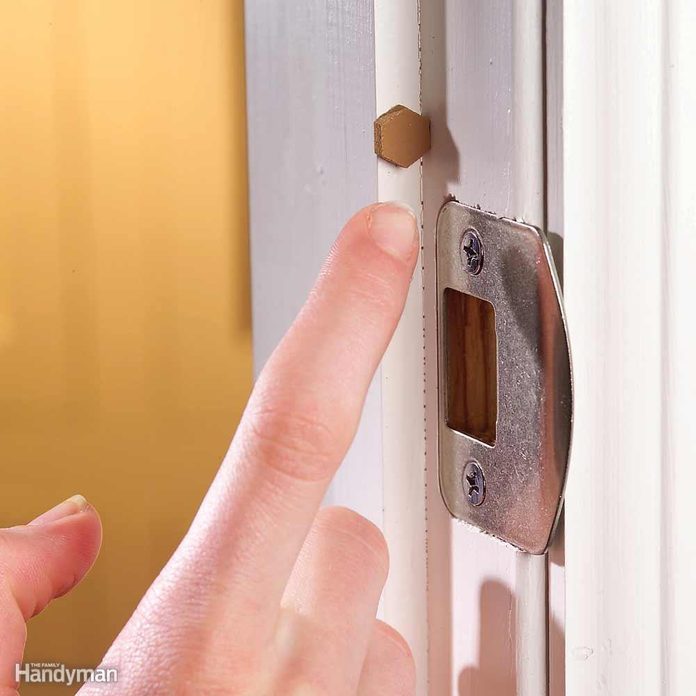
Slam Stopper
If your doors tend to slam or rattle, here’s how to quiet them: Stick cabinet door bumpers to the door stop. Place the bumper wherever the door first contacts the door stop molding. You can get a pack of bumpers at home centers.
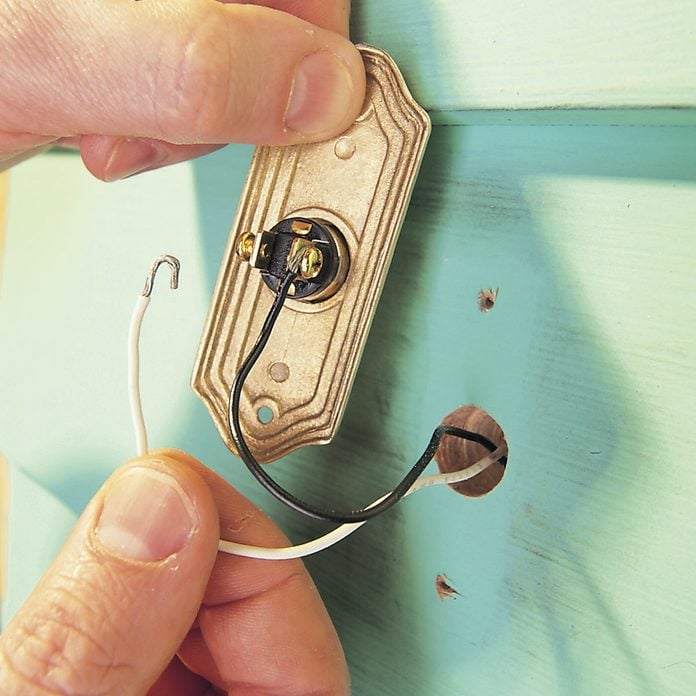
Replace a Doorbell Button
A doorbell has four components that can go bad. The pushbutton is the most likely culprit, followed by the chime unit. The transformer and wiring tie for third place.
Luckily, the most likely problem, the pushbutton, is also the easiest to fix. Doorbell buttons are connected to low-voltage wires, so there’s no danger of electrocution with this repair. Begin by removing the screws that hold the button in place. If your pushbutton isn’t fastened with screws, pry it out with a putty knife. Disconnect the two wires from the button and touch them together. If the doorbell rings, the button is the problem and you can solve it simply by connecting a new button. Learn how to wire a doorbell transformer.
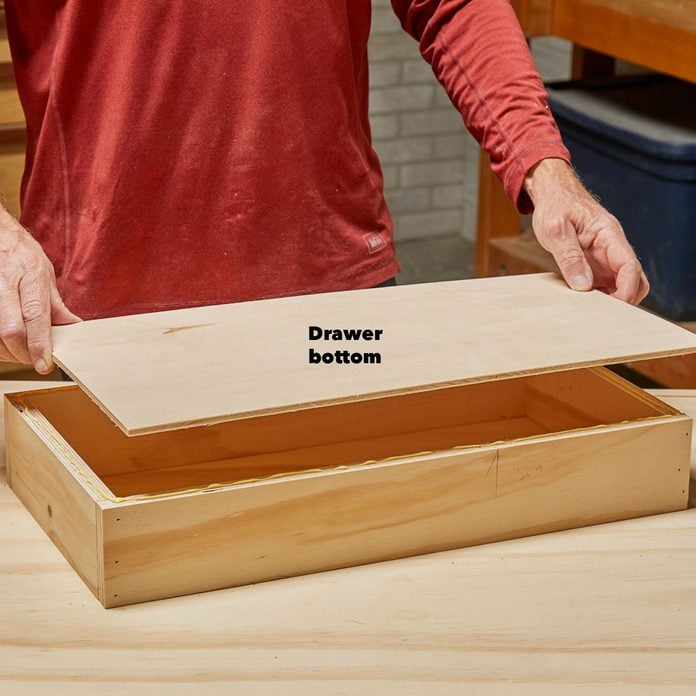
Reinforce a Sagging Drawer Bottom
You don’t have to replace a sagging drawer bottom. A typical drawer has a cavity beneath it that’s just deep enough so you can strengthen the bottom with a piece of plywood. First make sure the drawer box is square by using a large framing square or by taking diagonal corner-to-corner measurements (equal diagonal measurements mean the box is square). If the box isn’t square, square it up, clamp it and drive brad nails through the bottom. Two brads placed near the middle of each side usually provide enough strength to hold the box square. The back of the drawer shown here was bulging outward, so the clamps drew it in while we drove in the brads. Stiffen the old drawer bottom with any 1/4-in. plywood. Many home centers sell half or quarter sheets.
Measure between the drawer sides, front and back, and cut the plywood 1/4 in. smaller than the opening (1/8 in. on each side). Then glue the new panel in place. If the underside of the bottom is unfinished, use wood glue. If it has a finish, you can sand the finish or use construction adhesive. Set books or other weights on the panel. Wood glue forms a strong bond in about 15 minutes. If you use construction adhesive, leave the weights in place overnight.
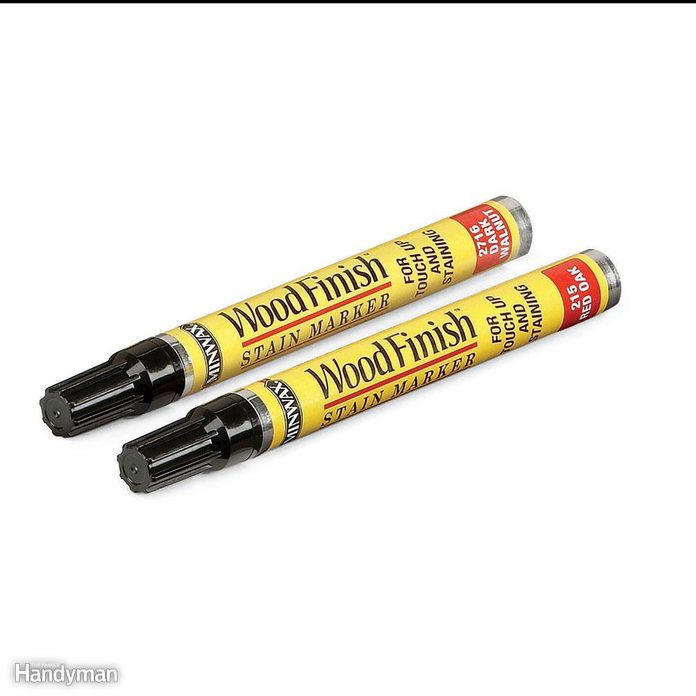
Stain Markers
Natural or stained woodwork is beautiful, but scratches can really stand out, especially with darker stains. You can make these scratches disappear by touching them up with a stain marker. It’s simple to use, and much cheaper than buying whole cans of stain. Buy a walnut stain marker on Amazon now.
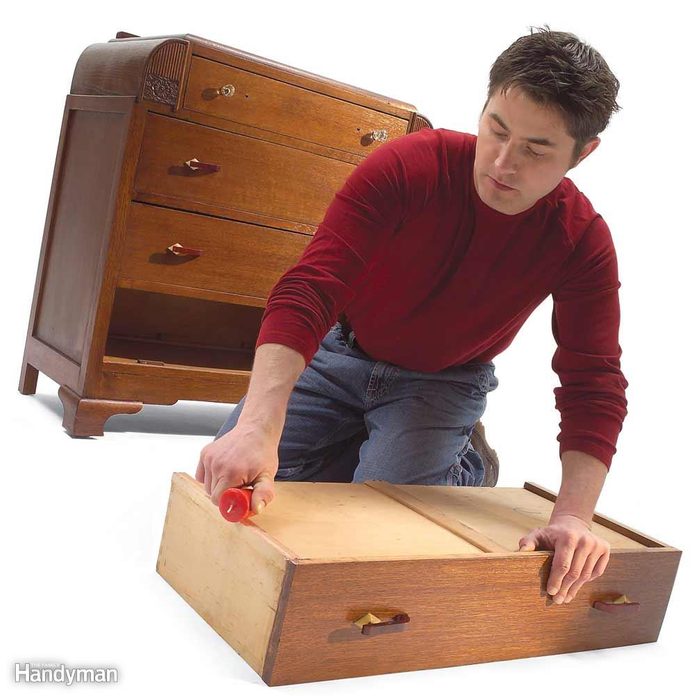
Candle Wax Lubricates Sticking Drawers
Candle wax is a handy lubricant for old drawers or any furniture that has wood sliding against wood. Just rub a candle hard against the skids under the drawer. Rub the tracks inside the chest or cabinet too.
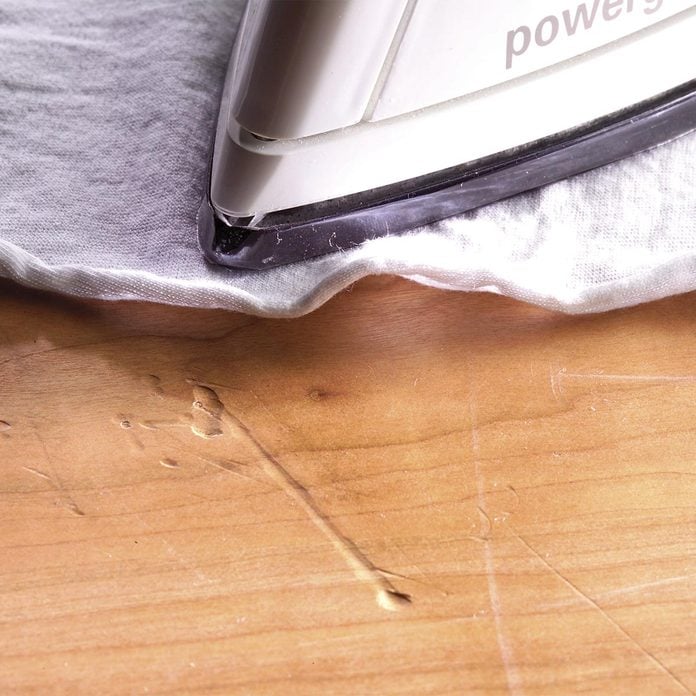
Iron Out Dents and Scratches
Before final-sanding your next masterpiece, shine a bright flashlight across the surface to locate any dents. Lightly mark them with a pencil. Now lay a damp cloth over each bruise and press a hot iron down on the cloth. The steam causes the wood fibers to swell and fill the dent. Keep the iron pressed down until you hear steam and see it coming out of the cloth.
After ironing, wait for the wood to dry before sanding. For deeper dents that don’t disappear with the first ironing, push a pin into the area while it’s still damp. This will allow steam to penetrate a little more during a second ironing and swell the crushed wood fibers.
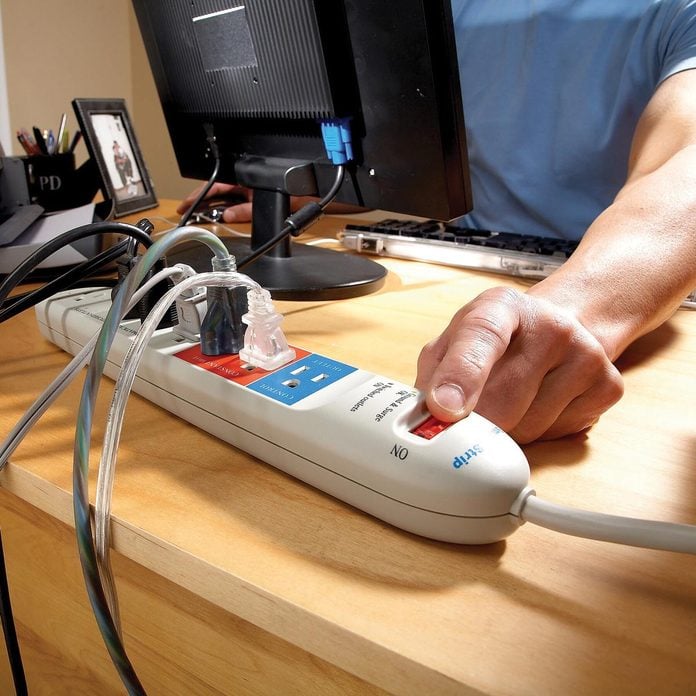
Before You Call an Electrician
“I can diagnose about 30 percent of electrical problems over the phone. I play a game of ‘Twenty Questions’ to see if I can avoid making a trip to the house.” Here are some of the most common complaints electrician Al Hildenbrand gets, and the questions he asks: “I screwed in a new fuse but I still don’t have any power.” Are you sure you used the same amperage fuse as the one you replaced? Is the fuse good? Is it screwed in tight? “I’ve checked the circuit breakers, but the outlet still doesn’t work.” Some outlets are protected by upstream GFCIs or GFCI circuit breakers. Look in the circuit box for a GFCI circuit breaker and in bathrooms, kitchens and laundry rooms for GFCI outlets. Test and reset them. This may solve your problem. “I replaced the lightbulb but the light fixture still doesn’t work.” Are you sure the new bulb is good? Try it in another light fixture and make sure it’s screwed all the way in.
“This outlet used to work. Now it’s dead.” Check all the switches in the room. One of them might control the outlet.
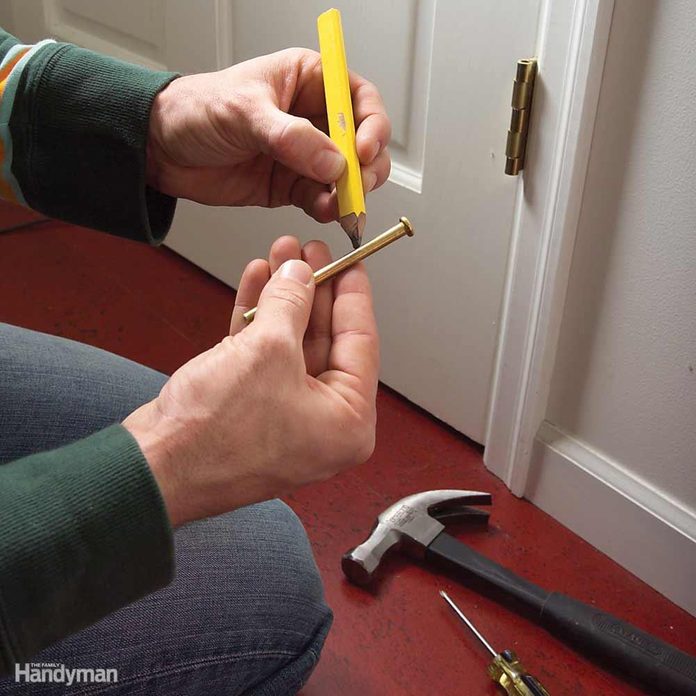
Hand Dry Lubricant
You can buy powdered graphite lubricant at hardware stores, but you already have it in a handy stick form in your pencil. Pencil ‘lead’ is actually graphite and it’s less messy than powder.
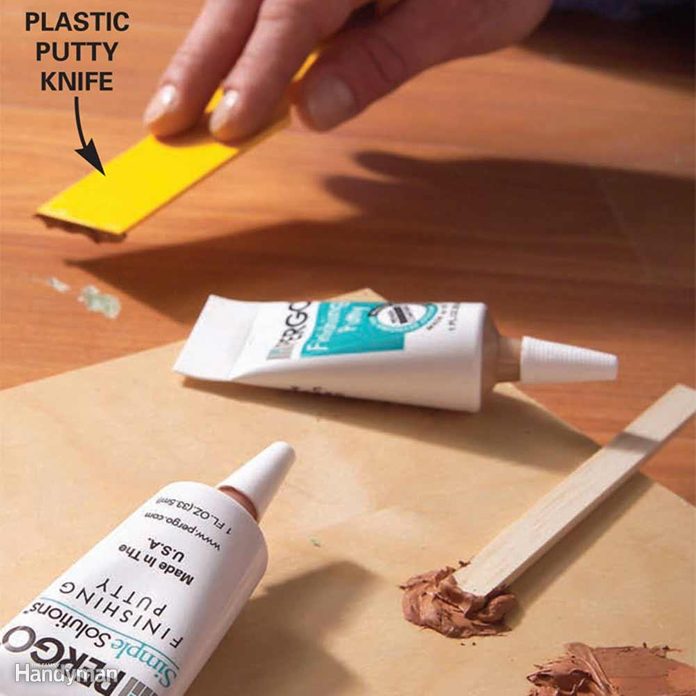
Blend Fillers to Patch Laminate
If your laminate floor has a few chips, gouges or deep scratches, you’ll like this good news: Home centers carry fillers especially for laminate floors. There are colors intended for specific brands of flooring, but you don’t have to run around hunting for an exact match. With a little experimentation, you can blend colors for a nearly perfect patch. Different areas of the floor may require different mixes. Apply the filler with a plastic putty knife to avoid scratching the floor.

Fluff up Furniture Dents in Your Carpet
To remove furniture footprints from carpet, dampen the carpet with a white rag (colored fabric can leave dye in the carpet). Then heat the area with a hair dryer as you rake the carpet yarn gently in all directions with a spoon. In most cases, the crater will completely disappear in five minutes or less. If not, let the carpet dry completely and repeat the process.
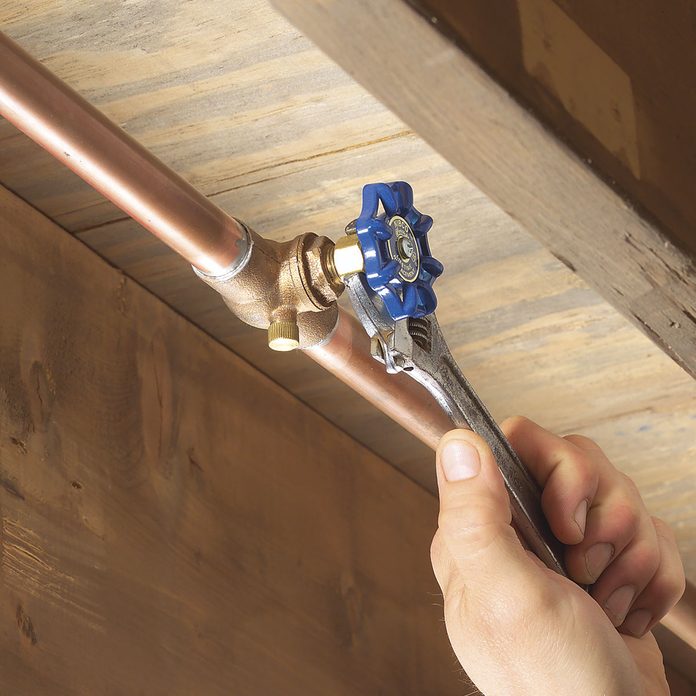
Got a Leak?
Plumbers tell us that leaks are one of the most common complaints they get. Valves are one of the main culprits because they have moving parts and seals that can wear out. The next time you see a suspicious puddle of water, look for a leaky valve before you call the plumber. Look at the valve to see if water is leaking out around the valve stem. If it is, try turning the packing nut (as shown) about an eighth turn with a wrench. You’ll know if you overtighten the nut because the valve will be hard to turn. If tightening the nut doesn’t stop the leak, the fix is a little tougher. You’ll have to shut off the main water valve, remove the handle and nut, and add to or replace the packing material—still a pretty easy fix.
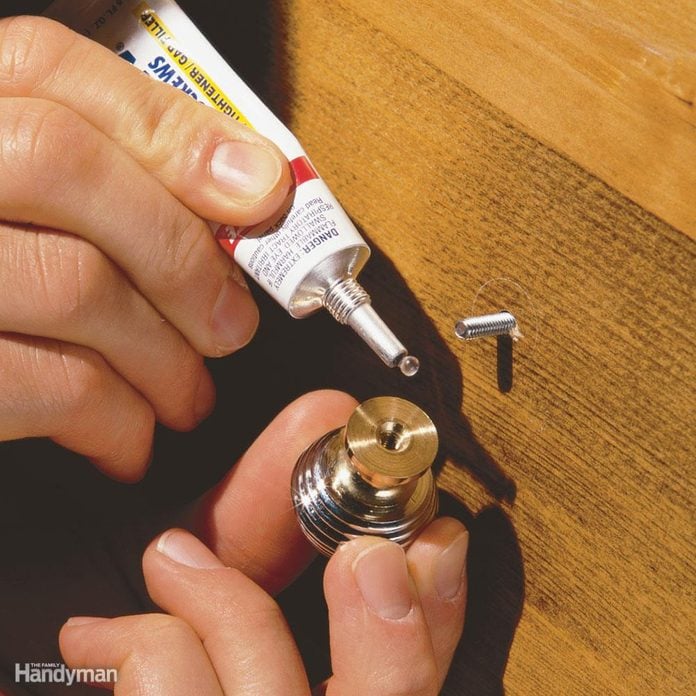
Thread-Locking Compound
For mysterious, quantum-mechanical reasons, the screws that hold handles and doorknobs always eventually work loose. A few drops of thread-locking compound will permanently fix the problem, yet still allow you to remove the screw with ordinary tools if you need to later. A heavier duty variety is also available for large bolts and machinery. Did you know that brass doorknobs self-disinfect over time?



















